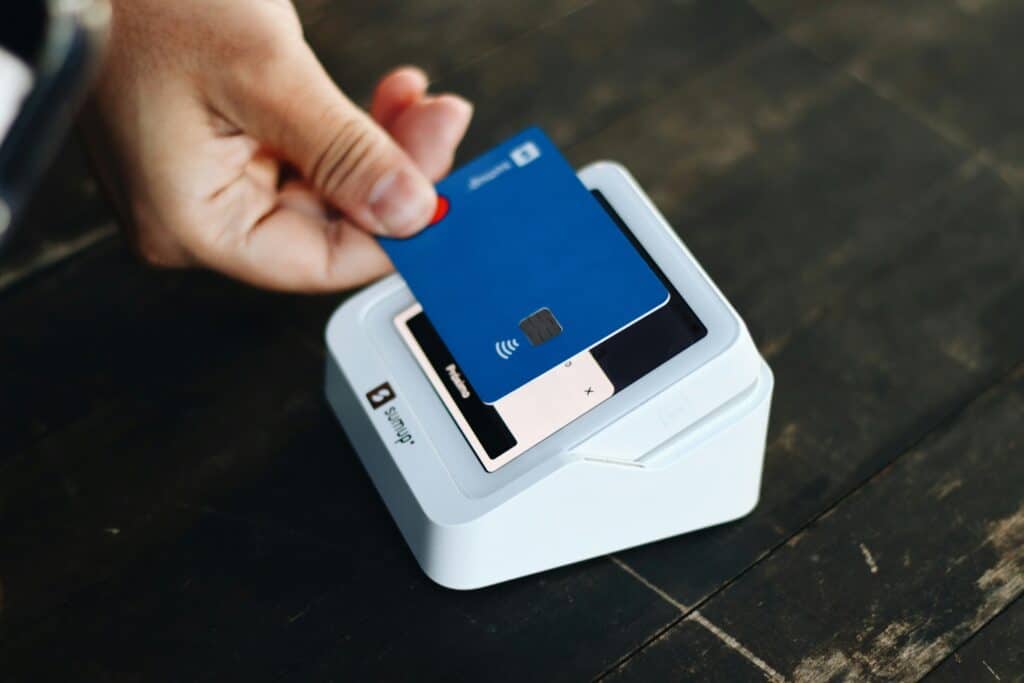In today’s digital donation eco-system, the methods nonprofits use to receive donations have evolved significantly. The trend towards digital transactions means that understanding the intricacies of credit card processing is more crucial than ever for nonprofit organizations.
As these entities strive to maximize their fundraising efforts, navigating the complex landscape of payment processing can be a pivotal factor in their success.
In this guide, we explore the essential aspects of credit card processing that every nonprofit should be aware of to ensure efficient, secure, and cost-effective donation management.
Download our checklist of the best free nonprofit tools of 2024
Nonprofit Credit Card Processing
Before you commit to a credit card processing system, it is important you understand what credit card processing is and the steps of actually processing a credit card.
By definition, credit card processing is the process that allows a merchant to accept credit card information, send the payment information to the credit card network, and finally send the payment authorization back to the bank.
There are many different factors that go into credit card processing.
- Firstly, we have the card holder, aka the donor.
- We then have the merchant, which in this case is the nonprofit organization.
- We have the acquiring bank, which is the bank used by the nonprofit organization.
- We have the credit card processing company, which is the system that the nonprofit chooses to use for processing their credit card donations.
- We then have the payment network, which is the merchant’s credit card network such as Visa or Mastercard. Finally, we have the issuing bank. This is the donors bank.
Knowing all of the components at play will make it easier to understand credit card processing.
Steps in processing a credit card donation:
- First, the nonprofit will take the donor’s credit card information.
- Next, the credit card processing system will give the donor’s credit card information to the payment network. The payment network will then request authorization from the donor’s bank.
- The donor’s bank will then validate the payment information and send the information back to the nonprofit.
- This step exists in order to prevent fraud or overdrawing from the donor’s account. A hold will then be placed in the donor’s bank in the amount of the donation.
- The nonprofit’s payment processor will then settle the transaction. After this, the funds will be released from the donor’s bank into the nonprofit’s bank.
- Finally, the various fees are taken from the transaction and the final amount is deposited into the nonprofit’s bank account.
The Benefits of Accepting Donations Through Credit Cards

Accepting donations through credit cards offers numerous advantages that can significantly enhance a nonprofit’s fundraising efforts. Here are some expanded benefits of utilizing credit card processing for donations:
Increased Convenience
Credit cards streamline the donation process, making it quick and easy for donors to contribute online or in person. In today’s digital age, the convenience of using credit cards is a significant factor as people carry less cash and rely more on digital payments.
This accessibility helps nonprofits cater to a broader audience, including younger donors who prefer digital transactions.
Enhanced Donation Intake
Implementing credit card processing can directly lead to an increase in total donations. By offering an online donation option, nonprofits eliminate barriers to giving, allowing supporters to make contributions from anywhere at any time.
This convenience can lead to more spontaneous and generous giving, as the process is as simple as a few clicks.
Recurring Donations
Credit card processing facilitates the setup of automatic recurring donations, which can stabilize a nonprofit’s income stream. Donors can choose to give regularly at set intervals—weekly, monthly, or annually—without the need to repeatedly enter their payment information. This not only enhances donor convenience but also helps nonprofits forecast their budget more accurately and plan long-term projects.
Incentivizing Larger Gifts
The ease of using credit cards can encourage donors to make more substantial contributions. Unlike cash donations, credit cards do not require physical money on hand, which can psychologically ease the process of donating larger amounts
Moreover, the ability to earn rewards such as cash back or travel points on their credit card can further incentivize donors to use their credit card for larger donations.
Expanding Donor Base
Credit card processing is not geographically restricted, which allows nonprofits to reach an international audience. This global reach is especially beneficial for organizations looking to expand their impact and engage with donors from different parts of the world.
Building Credibility and Trust
Having a secure and professional credit card processing system in place can also enhance a nonprofit’s credibility. It reassures donors that their transactions are secure, which is crucial for building trust and encouraging repeat donations.
Real-Time Processing and Instant Confirmation
Credit card donations are processed almost instantly, providing immediate funds to nonprofits and instant confirmation to donors. This immediacy can be vital during emergencies or fundraising drives when immediate access to funds can make a difference in the organization’s ability to respond.
By leveraging these benefits, nonprofits can not only increase their fundraising capacity but also improve their operational efficiency and donor satisfaction.
The implementation of credit card processing is a strategic move that aligns with modern financial practices and donor preferences, positioning the organization for greater success in its fundraising efforts.
Navigating The Fees
One of the most important things to take into consideration when it comes to nonprofit credit card processing is that no matter what there will be fees.
There are a variety of different fees that come with credit card processing. Firstly, there is the interchange rate.
The interchange rate is not dependent on the credit card processing system, but rather the credit card company/bank of the donor. There are two different charges that come with the interchange fee.
Despite the advantages, nonprofits must consider the associated fees:
| Fee Type | Description | Typical Range |
|---|---|---|
| Interchange Fee | Fee set by the credit card networks, varies by card type | 1.0% + $0.10 to 2.0% + $0.10 |
| Assessment Fee | Network charge for each transaction | 0.13% (Visa), 0.1375% (Mastercard) |
| Markup Fee | Additional fee charged by the processor | 0.2% to 0.5% |
| Flat Fee | Monthly or annual fee for using the processor’s services | $5 – $20 monthly |
| Gateway Fee | Fee for using an online payment gateway | $0.10 per transaction |
| PCI Compliance Fee | Fee for maintaining payment card industry standards | $10 – $30 monthly |
| Incidental Fees | Fees for chargebacks, refunds, and non-compliance | Variable |
Interchange Fees
Interchange fees are a fundamental component of credit card processing costs. These fees are determined by the credit card networks, such as Visa, MasterCard, and American Express, and vary based on the type of credit card used by the donor.
Typically, an interchange fee comprises two parts: a percentage of the transaction amount and a flat fee per transaction.
The percentage component depends on several factors including the type of card (credit, debit, or premium), the card issuer, and the specifics of the transaction itself—whether it’s processed online or in person. For example, premium credit cards often incur higher interchange rates due to the additional rewards and benefits they offer to cardholders.
The flat fee is a set amount that is charged along with the percentage of each transaction. This fee remains constant regardless of the transaction size, adding a fixed cost to the processing of each payment.
Interchange fees are designed to cover the costs of handling credit card transactions, fraud mitigation, and the risks assumed by the issuing bank. For nonprofits, understanding these fees is crucial as they directly impact the net amount received from donations. By choosing the right payment processor and understanding the fee structure, nonprofits can better manage these costs and maximize their fundraising efforts.
Assessment Fees
Assessment fees are another important component of the costs associated with credit card processing. These fees are charged by payment networks such as Visa and MasterCard and are calculated based on the total volume of transactions processed by a merchant.
Unlike interchange fees, which vary by card type and transaction details, assessment fees are more straightforward and proportional to the amount of money processed.
For nonprofits, assessment fees are a fixed percentage of the total transaction volume. This means that the more donations a nonprofit processes through credit cards, the higher the total assessment fees will be. The specific rate is set by each payment network and typically remains consistent across all transactions, regardless of the type or amount of the individual transaction.
These fees are used by the credit card networks to cover the costs of maintaining and improving their payment infrastructures, ensuring secure and efficient processing of transactions, and providing customer support and fraud monitoring services.
For nonprofits, managing the impact of these fees involves understanding their structure and factoring them into the overall cost of accepting credit card donations. This knowledge helps in budgeting accurately and choosing payment processing solutions that offer the most financial efficiency.
The assessment fee is also a fee that is associated with the donor’s individual credit card. Assessment fees/ rates are specific to Visa and Mastercard. If you want to learn more about interchange and assessment fees, check out this article by Main Street Merchant Solutions.
Markup Fees
Markup fees represent additional costs imposed by the credit card processing service itself, separate from the interchange and assessment fees set by the card networks. These fees are typically charged as a percentage of each transaction processed. The purpose of markup fees is for the processing companies to cover their operational costs and to make a profit.
Generally, the markup fee will be between 2%-3% of the donation amount no matter what processing system you use.
This is why it is important to take the markup fee into great consideration when selecting a credit card processing system.
Factors that can influence the rate include the volume of transactions, the average transaction amount, the perceived risk level associated with the nonprofit’s activities, and the additional services provided by the processor, such as customer support, fraud protection, and technology solutions.
Markup fees are an area where nonprofits have some room to negotiate with processors. By comparing offers from different processors and leveraging their transaction volumes, nonprofits might secure lower rates, thereby reducing the overall cost per donation.
Flat Fees
Flat fees in the context of credit card processing refer to a consistent, fixed charge that some processors levy on a monthly basis for the use of their payment systems. These fees are not dependent on transaction volume or the dollar amount processed; rather, they are static charges that must be paid regardless of how much or how little is processed through the system.
This type of fee structure can include charges for accessing the processing platform, customer service support, monthly account maintenance, and the use of specific features, such as the ability to handle recurring donations or to provide detailed reporting tools. The rationale behind flat fees is that they help cover the ongoing costs of providing these services, maintaining secure transaction environments, and ensuring system reliability and uptime.
For nonprofits, flat fees can be both a benefit and a drawback. On one hand, if a nonprofit processes a high volume of transactions, a flat fee can be more economical compared to variable fees that scale with transaction amounts. On the other hand, for smaller nonprofits or those with highly fluctuating donation patterns, flat fees can represent a significant overhead cost.
It’s important for nonprofits to carefully consider their expected transaction volume and the specific services they need when choosing a processor.
Some may find that a flat fee structure simplifies budgeting, as it makes expenses predictable. Others might opt for processors that charge exclusively based on transaction volume to avoid paying for unutilized capacity.
By understanding their own needs and the details of the fee structures offered, nonprofits can choose a payment processing solution that minimizes costs while maximizing the funds available for their core mission.
If you’re interested in learning more about different fees associated with credit card processing, check out this US News and World Report Guide.
Counteracting Fees

Do not let these fees prevent you from taking advantage of the benefits of processing credit card donations. First, make sure that you set up your credit card processing system account 100% correctly.
While this may seem obvious to say, small mistakes in setting up your account can amount in fees down the line. Additionally, many credit card processing systems are flexible in their fees.
If you are set on a certain processing system, then we would recommend you reach out to that organization and attempt to negotiate. Another method for decreasing transaction fees is to reduce the risk of fraud as much as possible.
We would recommend looking into an Address Verification Service.
An AVS is recognized by most payment networks, and the certification prevents fraud and can bring your transaction fees down by 1% or more.
One suggestion that we would recommend in order to entice donors is to offer to cover the credit card processing fees on donations made to your organization.
If you are an organization that has the capital to be able to cover these fees this can prevent donors from being put off by credit card processing fees.
If you are a smaller organization that is more reliant on donations we would suggest that you restrict your online donations to debit cards in order to ensure that your nonprofit is receiving one hundred percent of the donation.
If you are interested in other digital fundraising tools that could be beneficial for a nonprofit that may not be ready to process credit cards, Charity Charge has created a list of 5 Ways Technology Can Elevate Your Fundraising Strategy.
Affordable credit card processing options:
1. PayPal for Nonprofits
• Fees: 1.99% + $0.49 per transaction for registered nonprofits.
• Why It’s Affordable: PayPal offers one of the lowest transaction fees for nonprofits, especially for smaller donations. It’s also widely recognized and trusted by donors.
2. iATS Payments
• Fees: 2.49% per Visa/Mastercard transaction, $0.26 per ACH transaction.
• Why It’s Affordable: iATS specializes in nonprofit processing, offering competitive rates and additional savings on ACH transactions, which can be more cost-effective than credit card payments.
3. Stripe for Nonprofits (Discounted Rate)
• Fees: Discounted rates available for nonprofits upon request; standard fee is 2.9% + $0.30 per transaction.
• Why It’s Affordable: While the standard rate is 2.9%, Stripe often offers discounted rates for nonprofits, making it a flexible and affordable choice, especially for larger organizations that can negotiate lower fees.
Conclusion
Overall, credit card processing may not be the correct choice for every nonprofit. But, while there are processing fees that deter both nonprofits and donors, there are also benefits to accepting donations via credit card.
Donors can receive cashback and points when they donate their credit card, and the convenience of accepting credit card donations can increase the number of donors that your nonprofit could receive.
After outlining the factors, steps, benefits, and fees, your nonprofit should now be able to make the choice of whether credit card processing is the right choice for your nonprofit.






